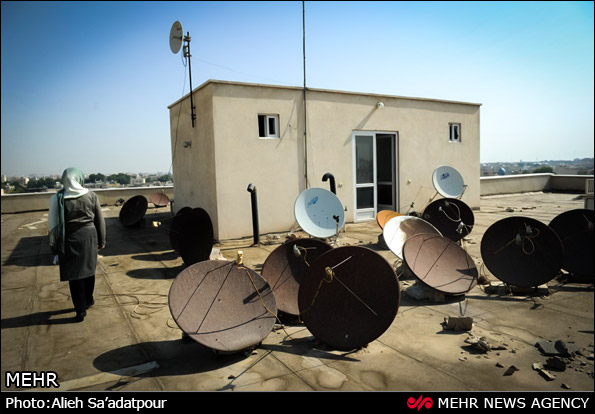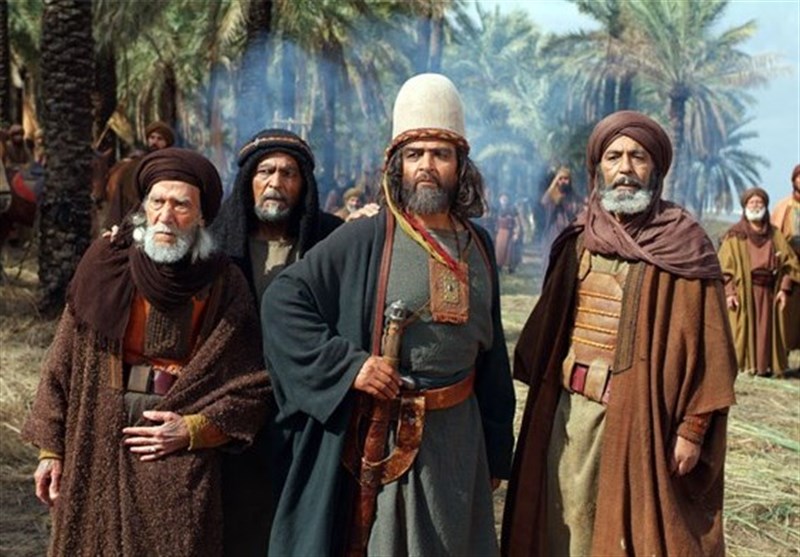In 1967 the National Iranian Television was officially started in Iran. As of the Islamic Revolution in 1979, about 75% of the population had access to the TV waves in the country. As I can remember, in my childhood -in the 1990s-, there were only two TV channels broadcasting for about 16 hours a day. We watched cartoons for about one hour each day and the parents watched the news every day and movies about once a week. I can remember when the third, fourth, …, until the eighth channel started their activity and when some channels announced their amazing 7*24 working hours. Then each province started its own channel. The Iranians enjoyed only 8 channels until about 10 years ago, the country switched to digital television technology and suddenly, started 10 more channels on the digital TV platform. Now we have more than 20 TV channels all running by a national state-owned organization called Seda Va Sima: Islamic Republic of Iran Broadcasting -IRIB.

Main channels as they introduce themselves:
- 1,2: National-official
- 3: Youth, entertainment, and sports (in HD quality)
- 4: Science and culture. Good for people with academic interests.
- 5: Tehran (historically for the Tehran province but now national)
- 6-IRINN: Only news!
- 7-Amoozesh: Education and training
- 8-Quran and religion
- 9-Mostanad: Documentaries (in HD quality)
- 10-Ofogh: Introducing the discourse of the Islamic Revolution
- 11-Namayesh: Only movies (Iranian or dubbed)
- 12-Press TV: English- and French-language news and documentary
- 13-Al-Alam: Arabic Language News
- 14-iFilm: Iranian film series (In three languages)
- 15-Varzesh: Sports
- 16-Shoma: Local cultures and tourism (programs are mostly produced in local provinces)
- 17-Tamasha: Film series (in HD quality)
- 18-Pouya & Nahal: For kids and children
- 19-Salamat: Health and medicine
- 20-Nasim: Fun and Entertainment
- 21-Omid: For teenagers
Read more about the IRIB channels in Wikipedia
There are also some other local (for each province close to their issues, cultures, and accents) and international channels (like Jame Jam, Sahar, Al-Kawthar, and Hispan TV). The international channels -even iFilm- are frequently banned or removed from international satellites or even from YouTube with the excuse of the American sanctions on Iran!

In Iran, the permission of running TV and radio channels in restricted to the government and there is no private TV and radio broadcasting in the country, however, the channels work with private producers. Moreover, having satellite receivers for household use is forbidden by law -but not enacted seriously these days as some statistics show about 60 percent of Iranian households have receivers at home. Yet, the national TV attracts a large number of audiences around the country and it is still the biggest actor in media. For some novel film series broadcasted on TV during the nights, more than 20 million watch them -the whole population is 80 million- and this number for some special programs like presidency election debates reach more than 50 million.
Some novel Iranian film series on the national TV in recent 30 years:
- Pedar Salar (1993)
- Khaneye Sabz (1996-2002)
- Imam Ali (Shaheed-e-Kufa) (1997-98)
- Pas az Baran (2001-2)
- Zire Asemane Shahr (2001-2)
- Khatte Ghermez (2001-2)
- Police Javan (2002-3)
- Shabe Dahom (2002-3)
- Pavarchin (On Tiptoes) (2002-3)
- Mosaferi az Hend (A Traveller from India) (2003)
- Shabhaye Barareh (2005-6)
- Roozegar-e Gharib (2007-8)
- Prophet Joseph (2008)
- Setayesh (2010- )
- Mokhtarnameh (2010-11)
- Paytakht 1-6 (2011- )
Also, well-dubbed movies and series -for example from South Korea- have attracted many audiences in Iran on the TV such as Dae Jang Geum & Jumong. In recent years, the most popular products of national TV are in the genre of TV shows and competitions like Khandevaneh, Dorehami, Asre Jadid, etc.
Because of this considerable influence, the Leader is responsible to assign the head of IRIB every 10 years. The incomes of this huge national organization are sourced from the public budget in half and from the advertisements the other half and there’s no subscription fee. Although there aren’t lots of advertisement comparing to many international channels, it’s increasing because of the budget cuts in the country and this has made some people unsatisfied.
Despite this monopoly in national media, in recent years by the spread of the Internet, PCs and DVD players in all households, the permission for ‘Household Broadcasting Network’ is given from IRIB to private producers for delivering movies and film series to the customers in DVDs through shops and supermarkets. The limitations of this type of production are much less strict.

Also, as almost everyone has access to high-speed internet these days, online solutions are developing in the country very fast. Namava and Filimo are just two large platforms for online content broadcasting (like Netflix) which are usually partnering with mobile operators to provide cheap access for everyone and change their habits from just waiting to watch their desirable programs on TV to choose what to watch whenever they want using the WWW. As we don’t have access to similar international platforms -due to the banking payment sanctions- these domestic actors are growing safe from global competitions. Also, as YouTube is filtered in the country, even free online contents are limited. Aparat.com is the alternative domestic platform developed in Iran. That’s now so developed that some producers prefer to upload their videos there instead of YouTube or sell it to the national TV and enjoy much more freedom to attract every group of society.
Read the post about Social Freedom in Iran
Watch all IRIB channels (live or archived) in Telewebion.com















